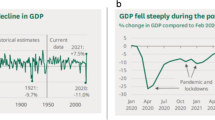Abstract
Objective
To validate a simple wealth index scale (WIS) based assessment of socioeconomic status and compare it with existing kuppuswamy(KUP) scale.
Methods
Families of 300 children aged 6 to 59 months of acute diarrhoea enrolled in a cross-sectional study were interviewed for socio economic status using both 8 item ownership scale (WIS) and Kuppuswamy (KUP) scale, validated against a reference standard Income Scale (IS).
Results
Out of 111 people classified as low based on Income scale (IS), 17% were identified by WIS, and 21% by KUP. In the upper low, 69.4% were identified by WIS and 84.3% by KUP. Amongst the low middle group the WIS identified 27.6% while KUP identified 10.6% and amongst upper middle patients 30% were identified by WIS and 15% by KUP. There were none in the upper income of WIS or KUP category. The WIS performed well in all income categories whereas the KUP was better for upper low and low income categories. The agreement between WI and KUP was 55.56%.
Conclusion
KUP scale is lengthy and difficult to administer by pediatric students and biased towards professional qualifications and education, rather than actual standard of living. It can be replaced by a simple 8 item ownership scale (WI) which is robust for all income groups and also shows good agreement with KUP.
Similar content being viewed by others
References
Kuppuswami B. Manual of Socioeconomic scale (Urban), New Delhi, Manasayan, 32, Netaji Subhash Marg, 1981.
Mahajan BK, Gupta MC, Textbook of preventive and social medicine. Delhi 2nd edn. Jaypee Brothers, 1995; 134–135.
Mishra D, Singh H. Kuppuswamy socioeconomic status scale — a Revision. Indian J Pediatr 2003; 70: 273–274.
National Family Health Survey-2, 1998–1999. International Institute of Population Sciences, Mumbai
The World Bank Participation Sourcebook, Appendix I, Methods and Tools, Available from URL: http://www.worldbank.org/wbi/sourcebook/sbhome.htm
Social Impact Assessment Tools and Methods available from URL: http://www.unep.ch/etu/publications/EIA-2ed/EIA_E_top13_hd.pdf
Mack J, Lansley, S. Poor Britain. London, George Allen and Unwin Ltd. available from URL: http://www.mande.co.uk/docs/democrat.htm
Understanding Poverty, Overview. Available from URL. http://www.worldbank.org/poverty/health/wbect/health_eg_tno4,pdf.
Background Document, unedited draft, 23-01-05 Unedited Working Paper, 14-07-2005 Global health promotion scaling up for 2015 — A brief review of major impacts and developments over the past 20 years and challenges for 2015. Available from URL: http://www.who.int/entity/healthpromotion/conferences/6gchp/hpr_conference_background.pdf
Aggarwal OP, Bhasin SK, Sharma AK, Chhabra P, Aggarwal K, Rajoura OP. A new instrument (Scale) for measuring the socio economic status of a family: Preliminary Study. Indian J Commun Medicine 30(4): 10–12.
Author information
Authors and Affiliations
Corresponding author
Rights and permissions
About this article
Cite this article
Patel, A.B., Prabhu, A.S., Dibley, M.J. et al. A tool for rapid socioeconomic assessment. Indian J Pediatr 74, 349–352 (2007). https://doi.org/10.1007/s12098-007-0058-2
Received:
Accepted:
Published:
Issue Date:
DOI: https://doi.org/10.1007/s12098-007-0058-2




